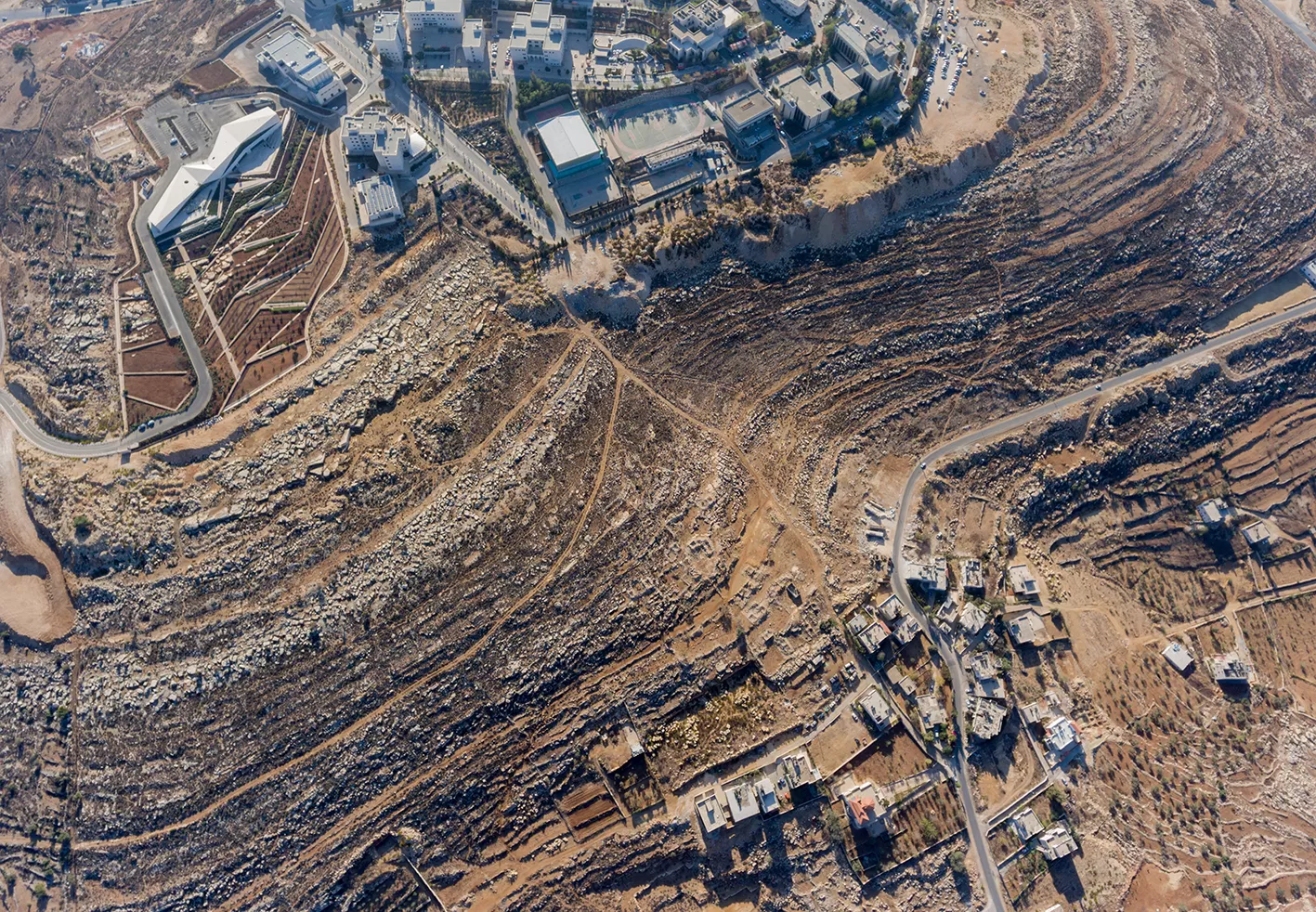
In collaboration with the Irish architecture company Heneghan Peng, the Palestinian Museum is participating in the international exhibition “New Museums: Intentions, Expectations, Challenges,” which addresses the architectural styles of contemporary museums. The exhibition was initiated by the Musée d’art et d’histoire, and was developed by Art Centre Basel, Switzerland. It opens on May 10th and runs until August 20th at the Musée d’art et d’histoire in Geneva.
The exhibition features museum projects from all over the world and traces how museums change under communal, commercial and cultural influences. Its aim is to present new approaches, and asks the question: What will museums look like in the future?
The past decade was characterised by a real museum boom which continues until today. Iconic museum buildings symbolize the importance cultural institutions hold in our society. They are often regarded as artworks in their own right and allow architects to enter unexplored creative territory. With new demands for sustainability, and with limited urban space, architecture is redefining our understanding of the museum as the temple-like white cube. But museums are changing on the inside too. In the era of digitalisation and virtual reality, they are required to rethink their purpose. With designs that extend from the exciting to the dynamic and to the sensuously beautiful, architects are creating places of encounter, communication and inspiration which make the world of art accessible to visitors in ways that are not always planned or conceived by curators.
The Palestinian Museum’s contribution was to collaborate with Heneghan Peng, the designers of The Palestinian Museum’s building, to prepare new and original material for the exhibition.
In October 2016, the Palestinian Museum commissioned Dutch photographer Iwan Baan to photograph the Museum. His candid documentary captures people and landscapes and building, as an integrated whole.
To accompany the new images, Heneghan Peng architects made new drawings and built a new model of the project. A large format drawing was made to include all the trees, plants and shrubs that are now integral parts of the site. The drawing intentionally avoids any line-work record of other hard landscape elements, such as rocks or metallic elements. The model is large, and was constructed using topographical survey information.
This model was constructed in London by Andrew Ingham and Associates. It was shipped to Geneva for the exhibition, and will finally be moved to Palestine, where it will be on permanent display.
The Palestinian Museum director, Dr. Mahmoud Hawari, considered the Museum’s participation in this international exhibition, alongside a group of architecturally distinguished museums, to be an opportunity to highlight the remarkable aesthetics of the Palestinian Museum’s architecture, and to demonstrate its position as a leading architectural model in Palestine and the region.
The Palestinian Museum will be participating alongside 18 other museums, including the Changsha Meixihu Lake International Culture & Arts Center, which was designed by the late architect Zaha Hadid, Zeitz Museum of Contemporary Art Africa in Cape Town, South Africa, the National Museum of African American History and Culture in Washington, DC, the Munchmuseet (Munch Museum) in Oslo, the Zayed National Museum in Abu Dhabi, the Guggenheim Helsinki Museum, the China Comic and Animation Museum in Hangzhou, and others.